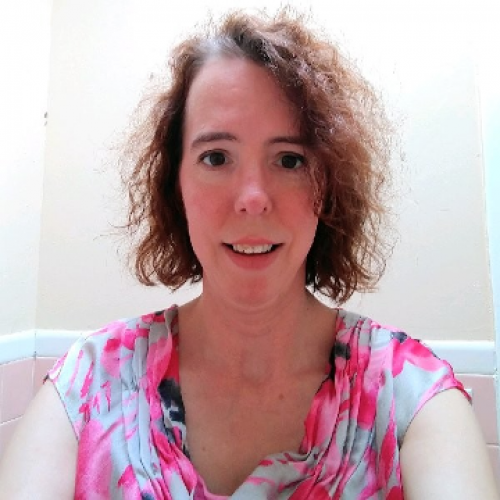Maximizing Fundraising Potential: Strategic Uses for ResearchPoint™ Batch Screens

Steffanie Brown
Blackbaud Employee








This guide explores how to strategically use batch screening in ResearchPoint to streamline prospect identification and enhance fundraising efforts. It outlines key groups to consider for batch screening—such as new parents, graduate alumni, event attendees, and new donors—and offers practical tips for prioritizing and importing lists. By leveraging batch screens effectively, organizations can uncover high-potential donors and optimize their cultivation strategies.As a ResearchPoint user, you likely have a set number of “batch screens” available to use every year. These batch screens can save time by screening an entire list of individuals at the same time, instead of manually selecting each individual and running an individual wealth screening. The big question is: Who to batch screen? Here are some ideas:
For schools and colleges: New parents/grandparents. Depending on the size of your enrollment, you can choose to screen the whole list of parents and/or grandparents, or you may choose to screen only those who are “full pay.” Some schools have a special President’s Reception during move-in week, and the screening can be a good way to identify parents who might be invited to this reception. If your school has a Parent Council or similar group with a fundraising goal, the screening can also be a good way to identify potential new members.
For higher education: New graduate-level alumni. Individuals earning graduate degrees are often established in their careers, and some may have significant assets, especially in real estate and business ownership.
For cultural organizations: New members. A wealth screening of new members can identify individuals who have substantial wealth indicators. These individuals can be invited to special events and cultivated as potential donors.
For all organizations: Event attendees. Does your organization have an event or events during the year likely to attract a number of new attendees? This group can be screened to identify potential donors. (Screening this group also will depend on the amount of information that is gathered on event attendees, since an address is needed for best results.)
For all organizations: New donors. Depending on the number of new donors, the frequency of these screening may vary, but it’s especially helpful to screen these new donors within 30 days. If the number of new donors each month is very large, you can screen only donors at a certain level (for example, new donors of $500 or $1,000). This screening can identify individuals who are making a smaller initial gift but may have the potential to give much more with time and cultivation.
For all organizations: New additions to the database. Again, depending on the number of individuals added to the database within a given time frame, the frequency of screening may vary. The priority on screening these individuals will also depend on whether they fit any of the other categories above, and if not, the reason why they are being added to the database. If they are from a purchased acquisition list, it might be prudent to wait until individuals engage before screening.
If you have multiple categories that you may want to batch screen, you may want to develop a standard procedure for screening priorities (i.e., new parents first, then new donors over $500, etc.). When you are ready to screen, you can import the list into ResearchPoint and screen it (see Blackbaud Knowledgebase 59619 How to import new records into ResearchPoint and then screen them through WealthPoint).
Strategic use of batch screening can be a great tool to identify potential new fundraising prospects. The suggested groups above can get you started on your identification journey. Happy prospecting!
For schools and colleges: New parents/grandparents. Depending on the size of your enrollment, you can choose to screen the whole list of parents and/or grandparents, or you may choose to screen only those who are “full pay.” Some schools have a special President’s Reception during move-in week, and the screening can be a good way to identify parents who might be invited to this reception. If your school has a Parent Council or similar group with a fundraising goal, the screening can also be a good way to identify potential new members.
For higher education: New graduate-level alumni. Individuals earning graduate degrees are often established in their careers, and some may have significant assets, especially in real estate and business ownership.
For cultural organizations: New members. A wealth screening of new members can identify individuals who have substantial wealth indicators. These individuals can be invited to special events and cultivated as potential donors.
For all organizations: Event attendees. Does your organization have an event or events during the year likely to attract a number of new attendees? This group can be screened to identify potential donors. (Screening this group also will depend on the amount of information that is gathered on event attendees, since an address is needed for best results.)
For all organizations: New donors. Depending on the number of new donors, the frequency of these screening may vary, but it’s especially helpful to screen these new donors within 30 days. If the number of new donors each month is very large, you can screen only donors at a certain level (for example, new donors of $500 or $1,000). This screening can identify individuals who are making a smaller initial gift but may have the potential to give much more with time and cultivation.
For all organizations: New additions to the database. Again, depending on the number of individuals added to the database within a given time frame, the frequency of screening may vary. The priority on screening these individuals will also depend on whether they fit any of the other categories above, and if not, the reason why they are being added to the database. If they are from a purchased acquisition list, it might be prudent to wait until individuals engage before screening.
If you have multiple categories that you may want to batch screen, you may want to develop a standard procedure for screening priorities (i.e., new parents first, then new donors over $500, etc.). When you are ready to screen, you can import the list into ResearchPoint and screen it (see Blackbaud Knowledgebase 59619 How to import new records into ResearchPoint and then screen them through WealthPoint).
Strategic use of batch screening can be a great tool to identify potential new fundraising prospects. The suggested groups above can get you started on your identification journey. Happy prospecting!
2
Categories
- All Categories
- 6 Blackbaud Community Help
- 209 bbcon®
- 1.4K Blackbaud Altru®
- 394 Blackbaud Award Management™ and Blackbaud Stewardship Management™
- 1.1K Blackbaud CRM™ and Blackbaud Internet Solutions™
- 15 donorCentrics®
- 359 Blackbaud eTapestry®
- 2.5K Blackbaud Financial Edge NXT®
- 646 Blackbaud Grantmaking™
- 563 Blackbaud Education Management Solutions for Higher Education
- 3.2K Blackbaud Education Management Solutions for K-12 Schools
- 934 Blackbaud Luminate Online® and Blackbaud TeamRaiser®
- 84 JustGiving® from Blackbaud®
- 6.4K Blackbaud Raiser's Edge NXT®
- 3.7K SKY Developer
- 243 ResearchPoint™
- 118 Blackbaud Tuition Management™
- 165 Organizational Best Practices
- 238 The Tap (Just for Fun)
- 33 Blackbaud Community Challenges
- 28 PowerUp Challenges
- 3 (Open) Raiser's Edge NXT PowerUp Challenge: Product Update Briefing
- 3 (Closed) Raiser's Edge NXT PowerUp Challenge: Standard Reports+
- 3 (Closed) Raiser's Edge NXT PowerUp Challenge: Email Marketing
- 3 (Closed) Raiser's Edge NXT PowerUp Challenge: Gift Management
- 4 (Closed) Raiser's Edge NXT PowerUp Challenge: Event Management
- 3 (Closed) Raiser's Edge NXT PowerUp Challenge: Home Page
- 4 (Closed) Raiser's Edge NXT PowerUp Challenge: Standard Reports
- 4 (Closed) Raiser's Edge NXT PowerUp Challenge: Query
- 779 Community News
- 2.9K Jobs Board
- 53 Blackbaud SKY® Reporting Announcements
- 47 Blackbaud CRM Higher Ed Product Advisory Group (HE PAG)
- 19 Blackbaud CRM Product Advisory Group (BBCRM PAG)